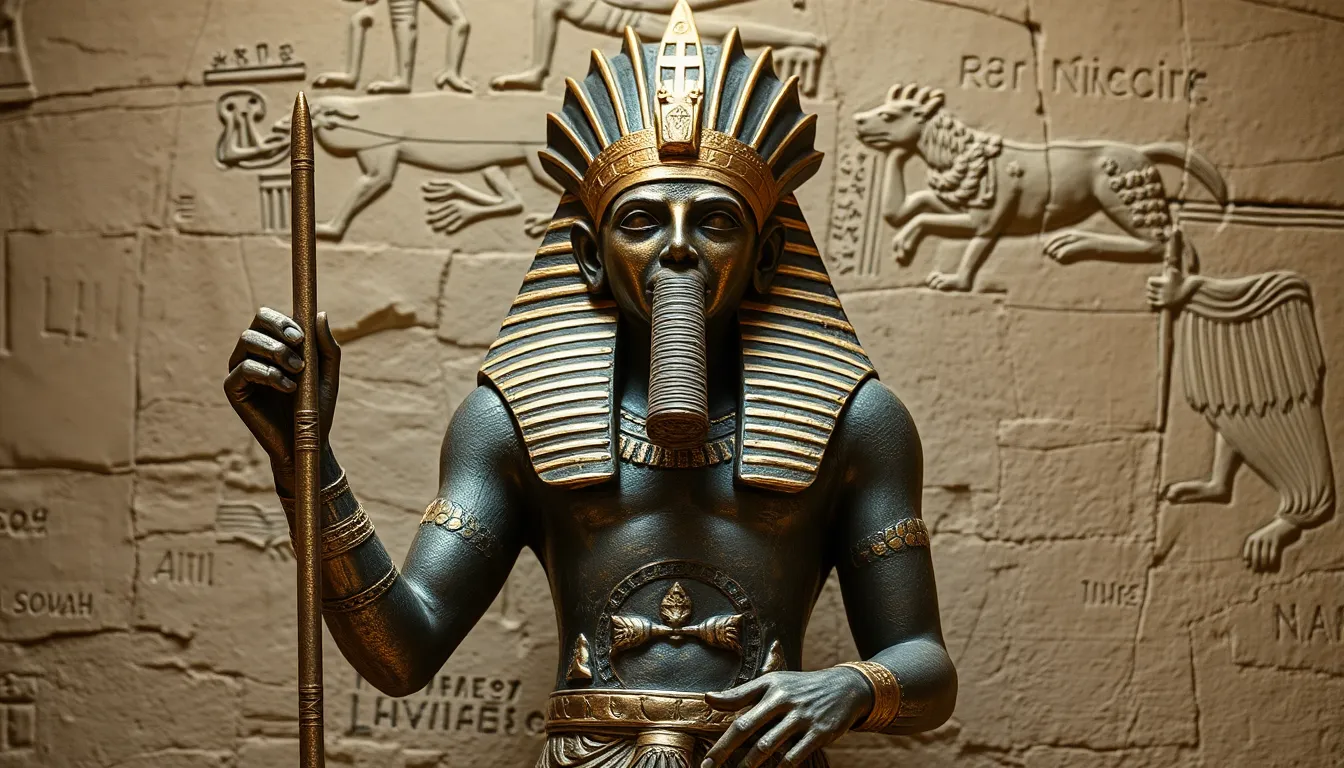The Role of the Deceased in Egyptian Funerary Practices
I. Introduction
Ancient Egyptian funerary practices are among the most fascinating aspects of their culture, reflecting a complex understanding of death and the afterlife. The treatment of the deceased was a critical component of Egyptian society, deeply intertwined with their religious beliefs and social structure. This article explores the various dimensions of the role of the deceased in Egyptian funerary practices, highlighting their importance in maintaining cosmic order and their enduring legacy.
II. Beliefs About the Afterlife
The ancient Egyptians held a rich tapestry of beliefs regarding the afterlife. They envisioned a life beyond death, where the soul would continue to exist in a different realm. The concept of Ma’at, representing truth, balance, and cosmic order, was fundamental to these beliefs.
- Ma’at: Central to Egyptian cosmology, Ma’at symbolized the harmony of the universe. The deceased were believed to play a pivotal role in maintaining this balance.
- Cosmic Order: The actions of the deceased, particularly their moral integrity during life, were thought to impact the stability of the cosmos.
Through proper funerary practices, the living ensured that the deceased could navigate the afterlife and uphold the principles of Ma’at.
III. The Preparation of the Body
The mummification process was a critical ritual in ancient Egypt, designed to preserve the body for the afterlife. This elaborate procedure involved removing internal organs, treating the body with natron, and wrapping it in linen.
- Significance of Mummification: Mummification was believed to prevent decay, allowing the deceased’s spirit (ka) to recognize and inhabit its physical form in the afterlife.
- Rituals: Various rituals accompanied the process, including prayers and offerings to protect the deceased’s journey.
The physical body was viewed not merely as a vessel but as a vital component of the individual’s identity in the afterlife.
IV. Funerary Goods and Offerings
Funerary goods played a significant role in the burial practices of ancient Egyptians. These items were included in tombs to aid the deceased in their journey and provide for them in the afterlife.
Types of Goods Included in Tombs
- Food and drink
- Jewelry and personal items
- Tools and weapons
- Statues and shabti figures
The purpose of these offerings was to ensure that the deceased had everything needed for a comfortable existence in the afterlife. Specific items symbolized different aspects of life and were thought to provide protection and sustenance.
V. Tomb Architecture and Location
The architectural design and location of tombs were reflective of the deceased’s status and wealth. From grand pyramids to simple rock-cut tombs, the diversity in tomb architecture highlighted the importance of the deceased in society.
Common Tomb Types
- Pyramids: Monumental structures symbolizing the divine connection between the king and the gods.
- Rock-Cut Tombs: More common among the elite and wealthy, designed to mimic the layout of a house.
- Mastabas: Flat-roofed structures serving as the earliest forms of tombs.
The location of a tomb also held significance, often chosen for its proximity to important religious sites or natural features believed to enhance the deceased’s journey in the afterlife.
VI. Rituals and Ceremonies
Funerary rituals were essential to honor the deceased and facilitate their transition to the afterlife. Among these, the Opening of the Mouth ceremony was one of the most significant.
- Opening of the Mouth: This ritual was performed to restore the deceased’s senses, allowing them to eat, speak, and interact in the afterlife.
- Role of Priests: Priests played a crucial role in conducting rituals, invoking the gods, and ensuring that the deceased received the necessary blessings.
- Family Participation: The family of the deceased was actively involved in the rituals, emphasizing the communal aspect of mourning and honoring the dead.
The involvement of the community in these ceremonies reinforced social bonds and highlighted the collective responsibility of the living toward the deceased.
VII. The Deceased’s Role in Family and Society
The deceased held an ongoing role in the lives of their families and communities. They were seen as protectors and guides for the living, with their spirits believed to influence the fortunes of their descendants.
- Protector of the Living: The deceased were thought to provide spiritual protection and guidance, acting as intermediaries between the gods and the living.
- Ancestral Worship: Remembrance practices involved rituals and offerings to honor ancestors, reinforcing familial ties and continuity.
- Social Implications: Funerary practices reflected social hierarchies, with the status of the deceased impacting the community’s response and involvement in rituals.
The respect and reverence shown toward the deceased were integral to maintaining social order and cohesion within ancient Egyptian society.
VIII. Conclusion
In summary, the role of the deceased in Egyptian funerary practices was multi-faceted, encompassing beliefs about the afterlife, the preparation of the body, and the significance of tombs and rituals. These practices not only reflected the cultural values of ancient Egypt but also the enduring legacy of their beliefs about death and the afterlife.
Through a deep understanding of the deceased’s role, we gain insights into ancient Egyptian culture and its approach to life, death, and the continuum of existence beyond the grave. The legacy of these traditions continues to inform modern perceptions of death and the afterlife, making the study of Egyptian funerary practices an essential aspect of understanding their civilization.




